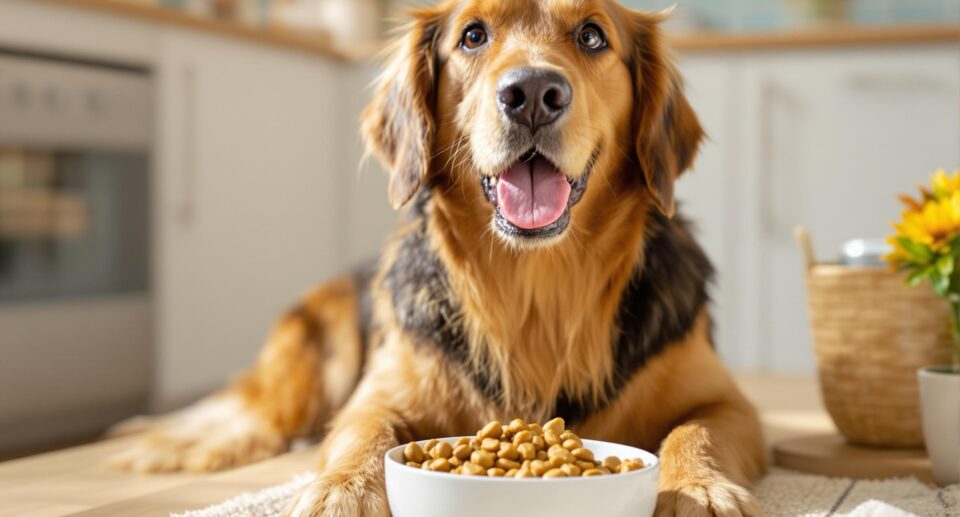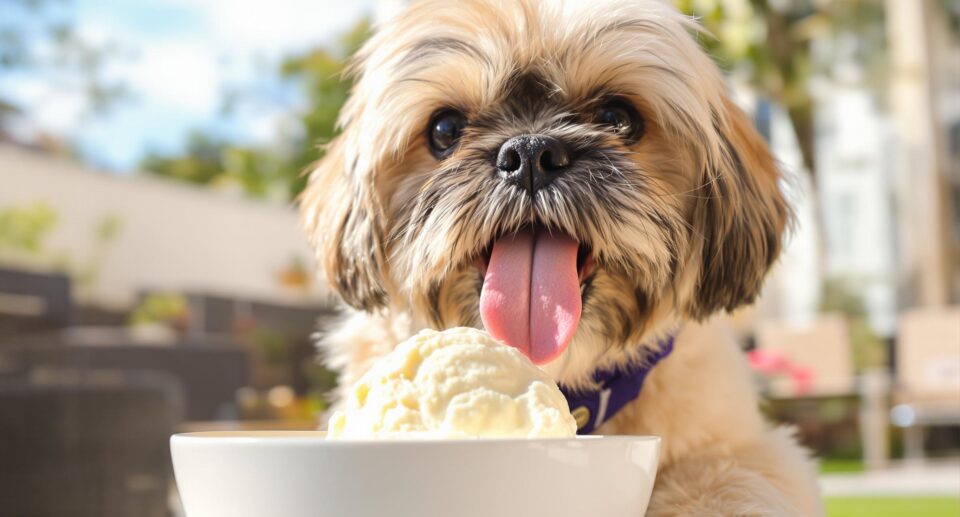How Many Calories Does My Dog Need Per Day?

You’ve probably noticed that your pet’s bag or can of food has guidelines on how much to feed your cat or dog according to their weight.
But these guidelines are just that – wide ranges that give you a vague idea of how much your pet should eat. Your pet’s age, body condition, breed, activity level, and other factors can have a major impact on their true caloric needs.
To make sure your pet is eating the right amount of food per day, you can calculate how many calories they burn daily, and how much they will need to eat to achieve or maintain their ideal weight.
How To Calculate How Many Calories Are In Your Pet’s Food
Most pet foods will list the number of calories in their recipe on the packaging. You’ll typically see something like “350 kcals per cup.” Kilocalories, or kcals, is just another name for “calories.”
A calorie is simply a measure of how much energy is in your pet’s food. Technically, one calorie of food is enough to, when burned, heat up 1 gram of water by 1 degree Celsius.
How Many Calories Does My Pet Need Per Day?
Calories in your pet’s food fuel everything they do. Your cat or dog is constantly burning calories both by active processes like walking and running, and by automatic body processes like breathing, digesting food, and even sleeping.
Simply put, your pet’s daily caloric intake should be close to their daily energy expenditure to maintain their weight. Pets that need to lose weight need to eat fewer calories than they burn. When the body is in a caloric deficit, it will burn body fat for energy. Conversely, when the body is in a caloric surplus, it will store energy as body fat.
It’s impossible to calculate how exactly many calories your pet is burning. But it’s possible to estimate how many calories they may burn based on their size, age, and breed, taking into consideration their activity level and whether or not they’re spayed or neutered.
Resting Energy Requirements for Pets Based on Weight
To get started, you’ll need to figure out your pet’s resting energy requirements (RER), which is the number of calories they burn exclusive of any physical activity.
First, convert your pet’s ideal weight in pounds to kilograms by dividing by 2.2
For example, a five-pound cat weighs 2.2 kilograms. A 30-pound dog weighs 13.6 kilograms.
Then, take your pet’s weight in kilograms to the power of 0.75. For the 5-pound or 2.2 kg cat, we get 1.8. For the 30-pound or 13.6 kg dog, we’d get 7.08.
Multiple that number by 70 to get their RER. For the 5-pound cat, that’s 126 calories, and for the 30-pound dog, that’s 495.6.
You can copy this equation, replace WEIGHT with your pet’s ideal weight in pounds, and paste it into Google search to quickly find your pet’s RER.
((WEIGHT/2.2)^0.75)*70=
Calculating Your Pet’s Total Daily Caloric Intake
Once you’ve calculated your pet’s RER, you’ll take that number and multiply it by the corresponding adjuster based on their age or health status to determine their total daily energy requirements (DER).
RER*1.6 = Neutered or spayed adult dog
RER*1.8=Intact adult dog
RER*1.2 = Neutered or spayed adult cat
RER*1.4=Intact adult cat
RER*1.2-1.3=Inactive or obesity-prone adult
RER*2=Puppies and kittens 4-12 months old
RER*3=Puppies and kittens under 4 months old
For our spayed 5-pound cat, we’d multiply her 126-calorie RER by 1.2 to get 151.2. The average 3-ounce can of wet cat food contains around 125 calories, and the average dry cat food contains about 300 calories per cup. So, she might have a half-can of wet food for breakfast and ¼ cup of dry food for dinner.
And for our obesity-prone 30-pound dog, we’d multiply her 495.6 RER by 1.2 to get 594.7. The typical dog food contains around 300 calories per cup, so she might get two cups per day.
Your pet’s caloric needs may vary from day to day. Active pets may need anywhere from 2 to 8 times their RER depending on just how much exercise they’re getting. If your pet spends time outdoors in the winter, they might need more calories to help them stay warm.
Adjusting Your Pet’s Caloric Intake
Your pet’s approximate daily energy requirements are a good benchmark. If your pet seems to be eating the correct amount of calories each day, yet they’re not at their ideal weight, it can be a clue that there are other factors, like hormones, metabolism, or even an underlying health issue like diabetes that can affect the way their body processes food into energy. Adjusting your pet’s caloric intake does not have to mean feeding significantly more or less. It might make sense to switch to a food that’s less dense in calories so you can feed the same amount, plus ensure that your pet is still getting enough vitamins and minerals each day.
Talk to your veterinarian about your pet’s ideal weight, and how you can safely help them achieve it.





